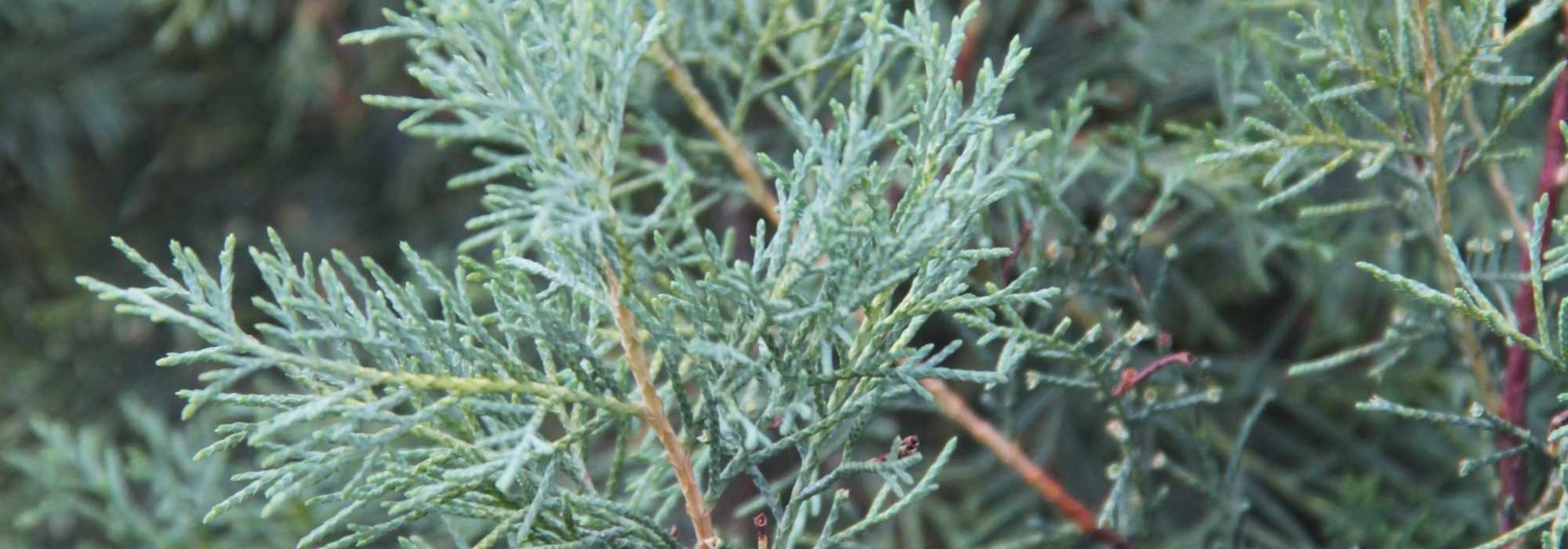
Cypress, Cupressus: planting, pruning and care
Contents
Cupressus, cypress, in a nutshell
- Cupressus are resinous with fragrant scale foliage, with varied habits — very columnar in Provence cypress, conical in Arizona cypress and massive with a spreading crown in Lambert cypress.
- They differ from Chamaecyparis or false cypresses by having cylindrical branches rather than flattened ones, and by much larger spherical cones.
- They prefer a sunny position and well-drained soil, even calcareous, and tolerate drought well once established.
A word from our expert
Cypresses or Cupressus appear as sturdy conifers populating dry southern regions, while their close cousins, the false cypresses, belonging to genus Chamaecyparis, are more accustomed to cool, humid northern regions. Provence cypress Cupressus sempervirens of Asian origin quickly became an icon of Mediterranean gardens and cemeteries. It plays a major role in Italian- or Provençal-style garden design and in Tuscan landscapes for marking agricultural plots. Already in ancient Greek and Roman times, the tree fascinated people with the permanence of its wood and its foliage. It was integral to mythology, symbolising eternal mourning and salvation, the wealth of a household… Mesopotamians used its essential oil as a principal medicine alongside willow, while Egyptians used it for embalming mummies.
The fine, scaly foliage of cypress gives off a strong resinous scent, even citronella-like, as with Lambert or Monterey cypress Cupressus macrocarpa, very common on the Breton coast.
These are undemanding conifers, notable for remarkable hardiness, accustomed to withstanding wind, sea spray and drought — qualities that led to their widespread planting in gardens of southern France. With olive, a few rosemary or cistus plants and a dry-stone terrace, Provence cypress remains an essential plant to complete image of Mediterranean garden, and you run little risk of losing it compared with other sun-loving trees or bushes.
Note that term «cypress» also designates other conifers such as Lawson cypress (Chamaecyparis lawsoniana), Leyland cypress (Cupressocyparis x leylandii), successful hedge plants, the latter obtained by cross-breeding between Cupressus macrocarpa and Chamaecyparis nootkatensis, swamp cypress (Taxodium distichum) and creeping Siberian cypress (Microbiota decussata), whose requirements in terms of soil and climate are quite different.
Description and botany
Botanical data
- Latin name Cupressus
- Family Cupressaceae
- Common name Mediterranean cypress, Arizona cypress, Monterey or Lambert cypress
- Flowering between February and May
- Height between 5 and 40 m
- Sun exposure sun or partial shade
- Soil type any deep, well-drained soil, even calcareous
- Hardiness Fairly good (-15 °C)
Genus Cupressus comprises around twenty species that generally inhabit regions with mild winters such as the Mediterranean basin, the west coast of the United States, Mexico, Guatemala, warm humid areas of the Himalaya and western China. Native range of Mediterranean cypress (Cupressus sempervirens), also called Florentine cypress, which is emblematic of Mediterranean regions, is probably Asia where it grows wild from northern Iran to China via Afghanistan and northern India. Its dark, evergreen, spindle-shaped habit associated with rot-resistant wood fascinated ancient Greek and Roman peoples who spread it as far as Ireland. North America, Madagascar, Australia and New Zealand have also adopted it. In return, Lambert or Monterey cypress (Cupressus macrocarpa), native to California, marks Brittany’s Atlantic coast with its robust, massive habit where it serves as a windbreak.
In France, three Cupressus species are mainly grown: sempervirens, macrocarpa and arizonica. The latter, also known as blue cypress, has a conical habit and grey-blue foliage prized as a specimen or as a large hedge plant in not-too-cold climates. Kashmir or Himalayan cypress (Cupressus cashmeriana), which forms a very impressive blue, weeping mass, is rather delicate to grow as it tolerates neither wind nor drought nor temperatures below -7 °C and requires cool, rich, well-drained soil. Hard to find in nurseries, excellent specimens are found in collections such as at the Brest Botanical Conservatory, sheltered by a cliff at the bottom of a moist valley. Other, less delicate cypress species likely remain to be discovered and trialled in our gardens.
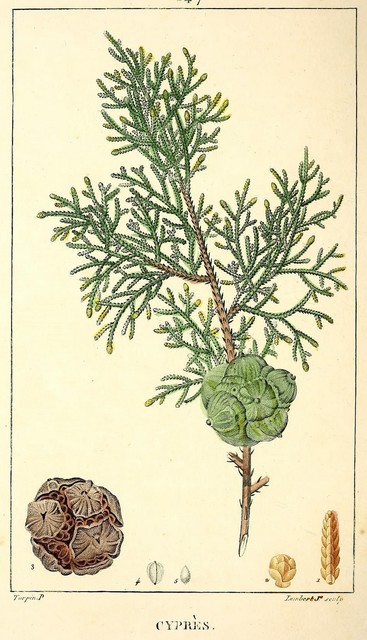
Cupressus sempervirens – botanical illustration
Cypresses most often have a bushy or tree-like, conical habit with heights varying between 5 and 40 m (25 m in cultivation). Habit spreads with age, notably in Lambert cypress (Cupressus macrocarpa) which has a wide trunk and sturdy horizontal scaffold branches. A weeping cultivar exists: Cupressus macrocarpa ‘Pendula’. Mediterranean cypress and the fastigiate form of blue cypress Cupressus arizonica Fastigiata are exceptions with a spindle habit, able to reach between 12 and 45 m tall with a trunk diameter ranging from 1.50 to 3 m at age 10 years. Nevertheless, C. sempervirens includes pyramidal forms with clearly horizontal branches. Grey to purplish-brown bark often bears resin exudations and becomes scaly (C. arizonica) or furrowed (C. sempervirens) with age depending on species. Longevity of cypresses often spans several centuries (500 years for Cupressus sempervirens) and up to 2000 years for Tassili cypress (Cupressus dupreziana), a Saharan species now endangered.
Young leaves take the form of non-prickly needles (unlike those of Juniperus), quickly evolving into triangular scale leaves of 2 to 6 mm arranged in opposite decussate pairs (perpendicular from one node to the next) covering the entirety of very finely ramified shoots. Twigs are cylindrical in contrast to those of Thujas which are flattened. Colour ranges from very dark green to bright green, passing through golden in C. macrocarpa ‘Goldcrest’ or grey-blue in C. arizonica. Species with leaves covered in small glands filled with essential oil are very fragrant.
Male and female flowers appear on the same individual but are separate. Small yellowish male aments of ovoid shape arranged on short shoots shed their pollen between February and May, sometimes causing allergies in sensitive people. Cones, almost spherical, called strobili or galbulus, 15 to 40 mm in diameter, present 6 to 14 imbricate woody scales with a fused bract. Scales open at ripeness after 18 to 24 months, releasing 6 to 20 seeds of 4 to 7 mm long, compared with 2 to 5 in false cypresses (Chamaecyparis), surrounded by a narrow wing.
Large numbers of cones produced are a drawback for Mediterranean cypress whose upright branches arch under their weight and spoil the slender habit. Choosing less fertile cultivars or a spring pruning remedies this defect.
Wood of Mediterranean cypress (sempervirens) is highly prized for its hardness, durability and scent. Blue cypress (Cupressus arizonica) is also grown for its wood or used as a Christmas tree.
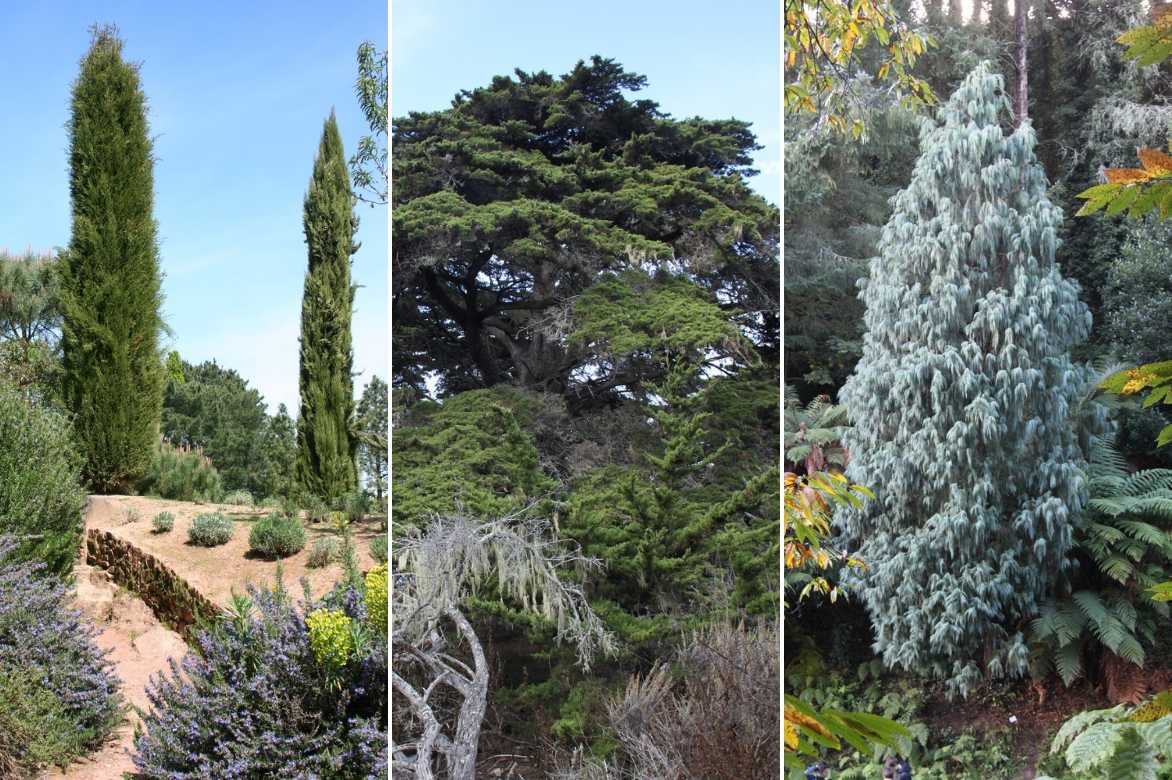
Several forms: Cupressus sempervirens / Cupressus macrocarpa / Cupressus cashmeriana
Read also
Major diseases and pests of conifersMain varieties of Cupressus (cypresses)
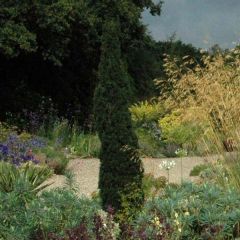
Cupressus sempervirens Totem - Florence Cypress
- Height at maturity 12 m
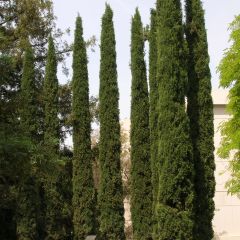
Cupressus sempervirens var. stricta
- Height at maturity 14 m
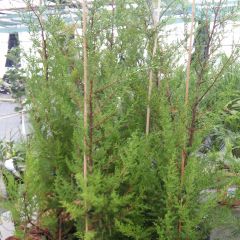
Cupressus macrocarpa
- Height at maturity 12 m
Discover other Cupressus
View all →Available in 1 sizes
Available in 3 sizes
Available in 3 sizes
Available in 1 sizes
Available in 1 sizes
Available in 1 sizes
Available in 1 sizes
Available in 1 sizes
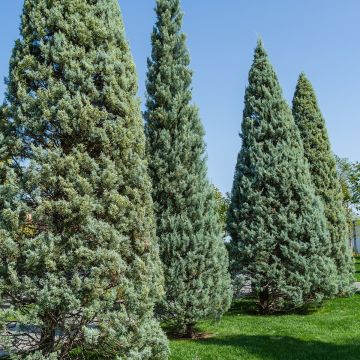
Available in 1 sizes
Available in 1 sizes
Planting
Where to plant cypress?
Cypresses are not demanding about soil quality, whether poor, rich, acidic, neutral or calcareous provided it is well drained. The hardiness of the main cultivated species is around -15°C so you can plant them as far as Paris region without problem. They tolerate sea spray, wind and heat very well thanks to their deep taproot root system capable of drawing water from great depth. However Monterey cypress clearly prefers the cool, moist conditions of oceanic climates while Arizona cypress and Provence cypress enjoy the warmth of Mediterranean climate. The latter was formerly used as an effective windbreak around fields in Rhône valley until it was decimated by cortical canker and replaced by poplar.
Except for Provence cypress or fastigiate forms, these are trees best reserved for large gardens or for areas set away from dwellings because they quickly occupy a wide space (10 m for Lambert’s cypress), have dense foliage that casts heavy shade and are not easy to fell.
Choose a very sunny position, although partial shade is tolerated, and ensure it is sheltered from cold winds except in southern regions.
When to plant?
Plant cypresses preferably in spring from March to May, especially if winters are cold, or from September to November.
How to plant?
This plant is easy to grow if care is taken to water it well to ensure establishment.
- Plunge the bucket into a bucket of water to thoroughly moisten it.
- Dig a hole three times wider than the rootball and loosen soil around with the tines of a fork-spade.
- Add a few handfuls of sand and gravel to ensure good drainage around the roots.
- Apply well-rotted manure or compost if soil is sandy.
- Place the plant in the planting hole.
- Insert 1 to 3 stakes outside the rootball, especially if specimen is already sizeable, then attach soft ties.
- Replace soil and firm lightly.
- Water
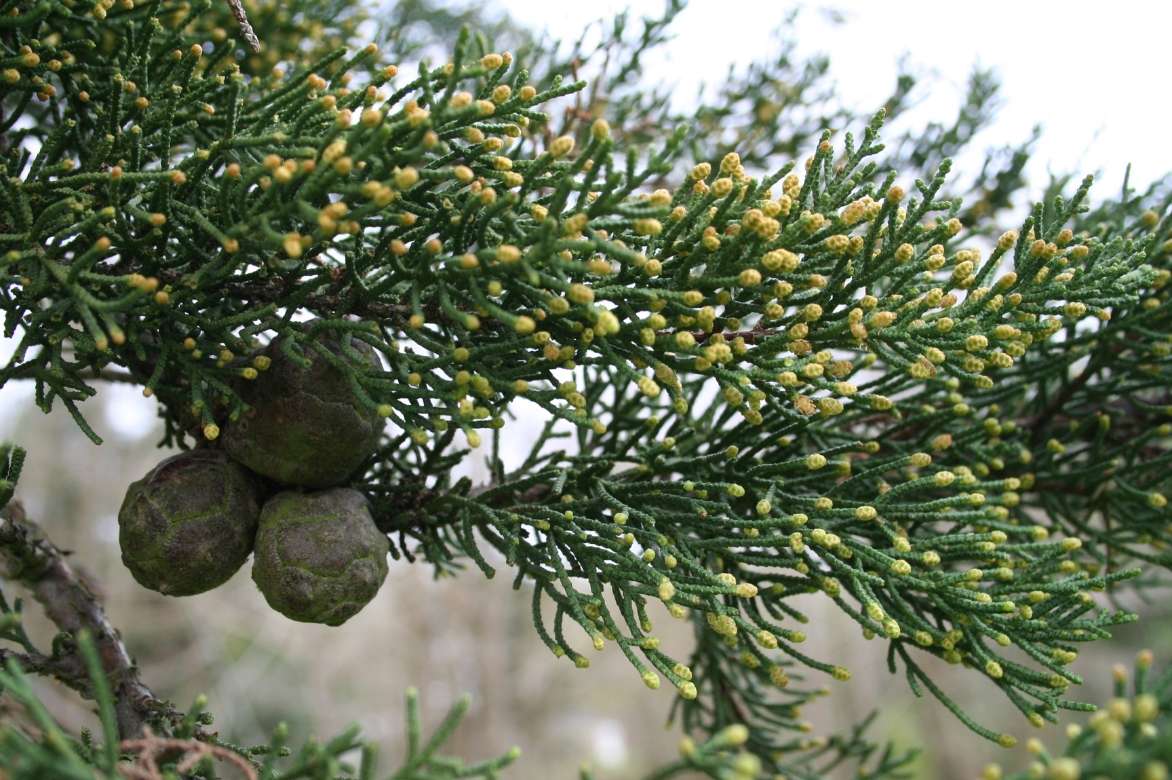
Cupressus macrocarpa and its characteristic cones
Read also
How to take cuttings from conifers?Pruning, care and diseases
- Water deeply and thoroughly during first two summers.
- Cypresses tolerate light pruning but are prone, especially in southern regions, to cortical canker, a disease caused by the fungus Seiridium or Coryneum cardinale, present worldwide except in Asia. It appears from spring as dieback of young shoots directly attached to the trunk and then on large branches, together with resin exudations leading to tree death. Wounds and repeated pruning favour contamination as well as attack of the wood by bark beetles. Apply copper preventatively or choose resistant forms such as Italian cypress Mistral or SancoRey. Cypresses do not resprout on old wood or from the stump.
- Mites, aphids and scale insects are also common pests in hot, dry weather but are not very damaging; they can be controlled by spraying with a jet of water or by applying an insecticidal treatment.
→ Learn more about cypress diseases and pests in our advice sheet.
Propagation
Multiplication is most often by sowing in spring or summer after stratifying seeds for at least 3 months. Cultivars multiply fairly easily by propagation by cuttings from August to October.
Sowing
Sow on a heated bed in a well-drained substrate. Lift natural seedlings you can find around shrub varieties in particular.
Propagation by cuttings
Prepare a deep pot by filling it with potting compost mixed with sand, then :
- Take shoot tips with a heel 12-15 cm long.
- Remove leaves located near the base of the cutting.
- Insert these to two-thirds of their length, ensuring they do not touch one another.
- Firm the compost gently all around to eliminate air pockets.
- Place them covered in semi-shade, for example by placing a cut transparent plastic bottle over them.
- In spring, separate rooted cuttings and pot them up, keeping them in pots until planting out in autumn or the following year.→ Discover our tutorial: How to propagate conifers?
Uses and companion plants
Large cypresses are generally used as solitary specimens or in small groups as landscape markers at house entrances, for example. Use as a free hedge to form a windbreak is also common in the south to combat tramontane or mistral. It is not unusual to see hedges of Cupressus sempervirens made up of various clones more or less spreading such as MISTRAL® Agrimed 1 and Antain, which thus provide better protection against wind penetration. These two clones grafted onto sowings of the type species therefore offer reduced sensitivity to cortical canker.
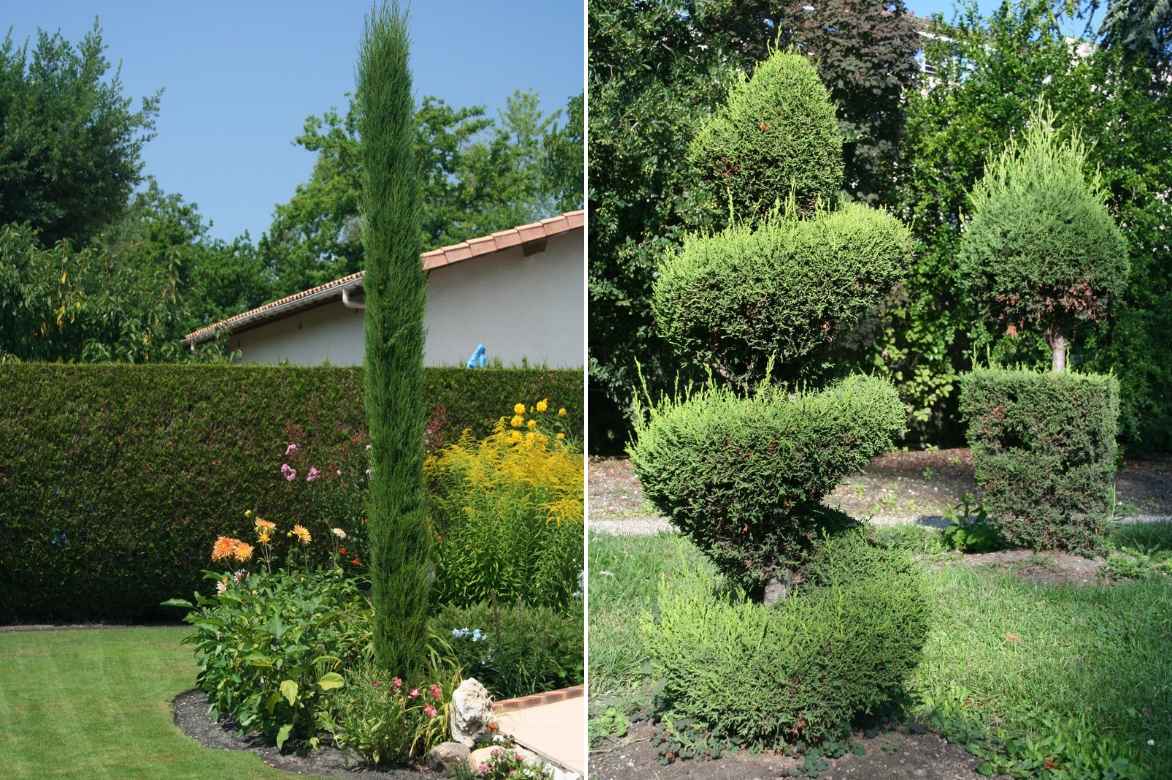
Two examples of use: Cupressus sempervirens ‘Totem’ gives verticality to the garden / Cupressus sempervirens can be pruned into topiary
Cypresses are inseparable from Mediterranean cemeteries, much like yew on the Atlantic coast. Rows of cypresses with very dark foliage are also highly attractive when alternated with olive trees with silvery foliage to emphasise an avenue leading to an estate.
Whether forming a spindle or a cone, blue cypresses and Italian cypresses are sometimes used in topiary, pruned in spiralled shapes, or trained to form pom-poms. These are light pruning operations intended to reduce the length of shoots without cutting into old wood.
Cypresses are useful for repopulating forests on dry soils, for holding soil on gravelly ground, and are considered, for example, for revegetating the Esterel — as with the Tassili cypress, which unfortunately has great difficulty reproducing in its habitat, Sahara, due to lack of water at the time of seed germination.
Further information
Discover our range of Cupressus.
Frequently asked questions
-
What is the difference between Italian cypress Stricta, Pyramidalis and Totem?
Species Cupressus sempervirens has a form with spreading branches 7–8 m in every direction, encountered near Montpellier in the wild, hardy to -20°C and known as 'Horizontalis'. This has produced intermediate forms with erect shoots called Stricta or Pyramidalis (often synonymous), which can form a spindle 1.50–3 m wide at the base and 25–45 m high. Cultivar 'Stricta' more precisely denotes Italian cypress with a distinctly spindle shape not exceeding 1.50 m wide and 15–25 m high, with brighter foliage than the typical species and very rapid growth, reaching 4–5 m after 10 years. Hardiness -10°C. Cultivar 'Totem' forms a truly compact and regular tree 10–15 m high by 1.50 m in diameter, with slower growth of 2.50–3 m after 10 years, complete absence of fruits and better hardiness down to -15 to -20°C.
- Subscribe!
- Contents
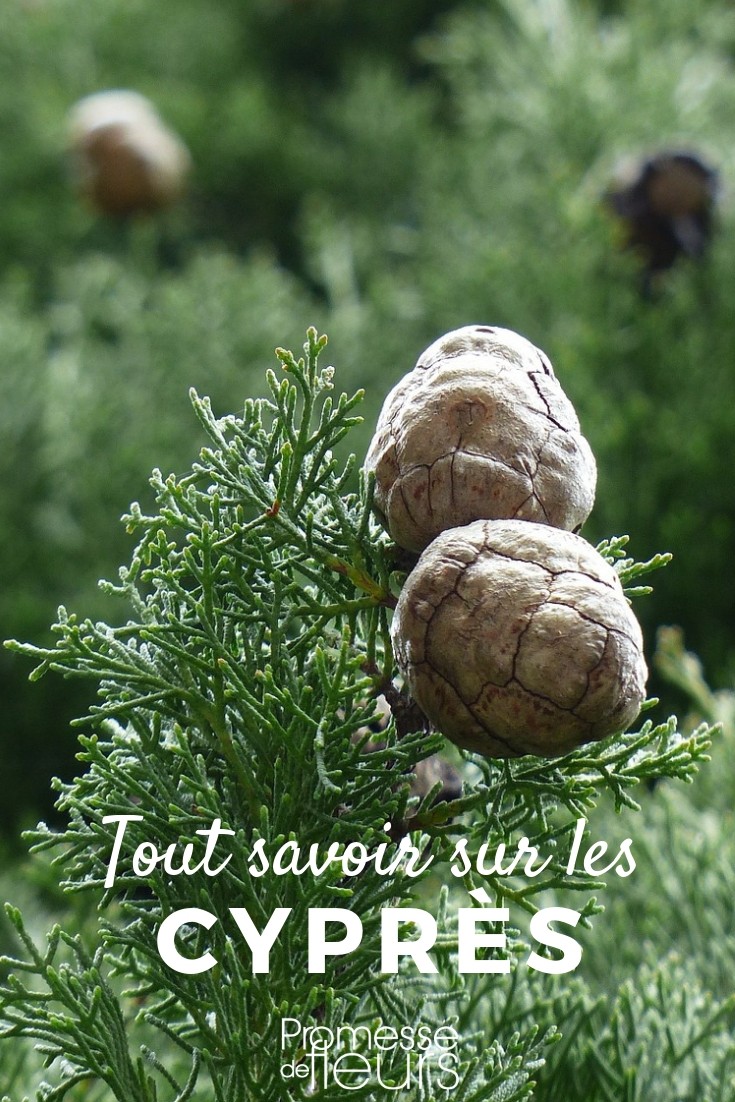
































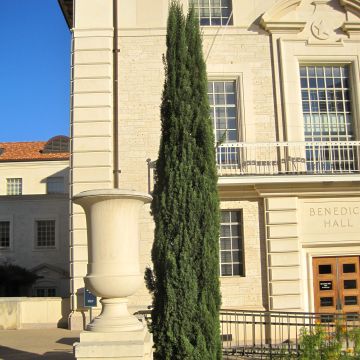

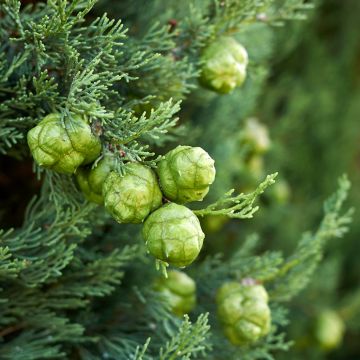
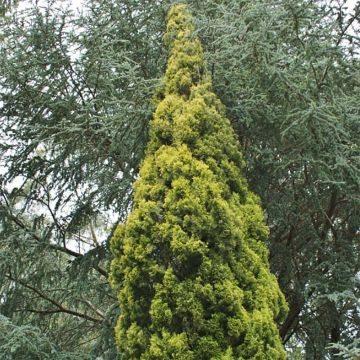

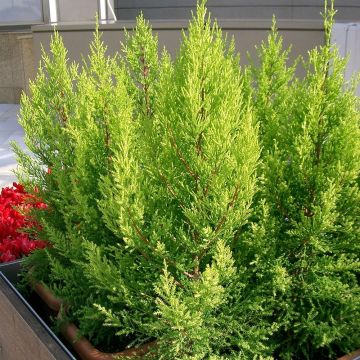


Comments